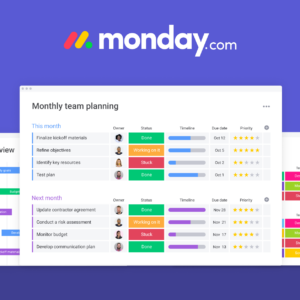You may have heard of Lean Six Sigma. If not, then you’re about to read a Cliffs Notes version of what it is and how it can apply it to your service-based organization.

What is Lean Six Sigma?
It might surprise you that Lean and Six Sigma are actually two distinct methodologies or frameworks for improving quality. Warning! For Lean Six Sigma practitioners and purists, bear with me because I’m about to give an extremely simplified definition of these two frameworks. Remember, these are cliff notes.
Lean is a framework for reducing waste in your operations. Waste comes in many forms including motion, overproduction, and downtime. Although its origins can be traced back to quality pioneer W. Edwards Deming, as a production framework Lean was formalized by Toyota.

Six Sigma is a framework for reducing errors in your operations. Errors also show up in many forms including defective products, missed deadlines, and incorrect data entry. As such, Six Sigma is more rigorous in its application compared to Lean in that it involves detailed data collection and statistical analysis.
Combined, Lean Six Sigma offers a powerful and methodical approach for radical transformation. Despite popular belief, it absolutely can be applied to small and service-based businesses. Below are four ways it can transform your operations.
1 | Becoming Customer-Centric
At the heart of Lean Six Sigma is your customer. Everything you do and the way you do it should always be with your customers in mind. To that extent, being customer-centric means that customer preferences and impact are at the center of every decision you make. You have both external (those who pay you) and internal customers (those who work for you). It’s easy to fall into the trap of making an improvement or upgrade to the services that you think are beneficial, but unless it directly translates into a benefit to your customer, then it’s not worth pursuing.

2 | Defining Value
Becoming customer-centric also means you may have to redefine value. Does the value you think you offer align with the value that your customers report receiving? The best way to find out what your customers deem valuable is to listen to what they directly tell you. Pay attention to online reviews, survey results, keywords in testimonials, and mentions on social media. Your customers will always tell you how they define value – it’s up to you to take notice.

3 | Developing a Continuous Improvement Culture
“Today’s improvement becomes tomorrow’s standard.” This is a popular saying in the world of process improvement. It implies that perfection is not an endgame; rather, it’s something to strive for. Continuous improvement and innovation are by-products in the quest for operational perfection.

4 | Implementing Transparent Processes
Business processes describe, in detail, how you provide your services to your customers. Process maps and value stream maps are cornerstones to Lean Six Sigma initiatives as they shine a spotlight on where bottlenecks, waste, and opportunities for automation may exist. The goal of any process is for it to be documented such that anyone who performs that process can, within reason, produce the same result. This fundamental requirement of processes naturally encourages transparency that can permeate your organization.

Final Thoughts
For what it’s worth, achieving a truly Lean organization that wholly operates at a Six Sigma level is no small feat. In fact, very few companies in the world have attained this distinction. But that doesn’t mean you can’t start your Lean Six Sigma journey now. With the right mindset and leadership support, you can begin educating yourself about Lean Six Sigma by taking certification courses like the ones offered by Purdue University where I teach Lean Principles.
As you’ve read, processes are critical to the success of Lean Six Sigma. But what if you don’t know what your processes are let alone how to document them? Well, you’re in luck because in an upcoming article, I’ll share a business infrastructure model that will put you on the path to process identification, documentation, and improvement.
________________
This article originally appeared in Issue 8 of the Smooth Operator newsletter on LinkedIn, by Alicia Butler Pierre.











